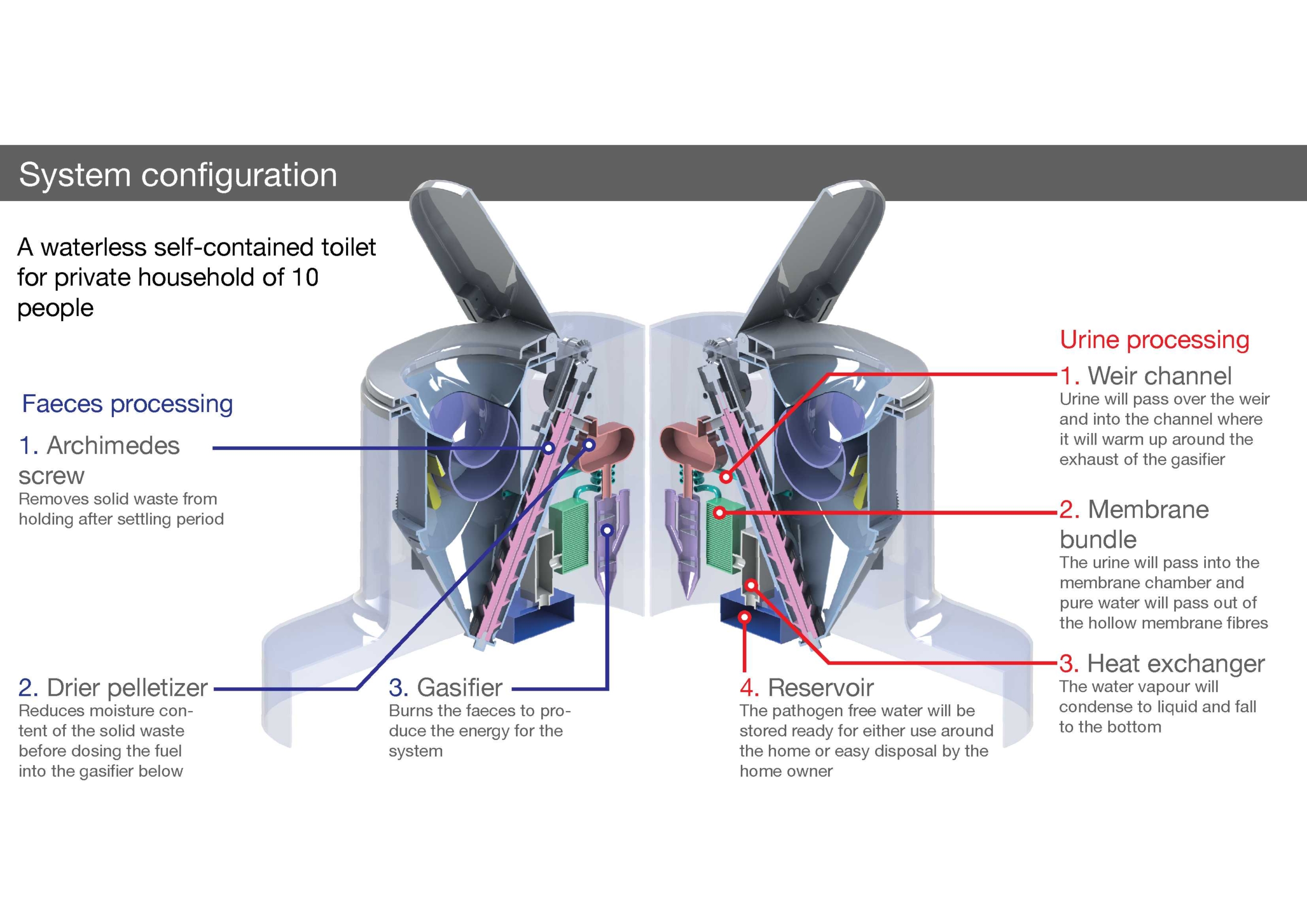Developing the Nano Membrane Toilet
29/06/2016

The Nano Membrane Toilet is a waterless, self-contained toilet for households of up to 10 people that has been in development since 2012. While the challenge we face – reinventing the toilet to provide access to safe and affordable sanitation – has not changed, much of the technology in the toilet itself has been refined and adjusted.
From the outside, early prototypes and our most recent prototypes look very similar. We’ve always believed that the Nano Membrane Toilet should have an aspirational design and that it should have a small enough footprint to fit in a low income household. However, on the inside, things have been changing.
One of the biggest shifts has been the end of the process for solid waste (faeces). Our initial design sent waste up an Archimedes screw to a misting chamber. As the waste fell from the top of the screw and landed in a collection chamber it was misted with paraffin wax. This could stop the pathogens escaping while letting the waste dry out.
However, working with colleagues in Energy at Cranfield, we have come up with a new solution. A gasifier can convert the solid waste to harmless ash. And, in doing so, it is able to produce the energy required by the other processes in the toilet (like the membrane processes which turn urine into safe water). We are also hoping that this process will even produce excess energy which could charge mobile phones or other low voltage electronics. This is clearly a better and less wasteful solution.
Elsewhere in the inner and outer workings of the toilet we have been experimenting and making adjustments to every aspects of the toilet. Members of the team have been refining the flush, for example, to make sure the bowl is clean every time. Other team members have been looking at how we can tweak the Archimedes screw to make sure it works effectively. We know that every single aspect has to be checked and trialled to ensure the toilet is reliable as well as easy to use.
To reflect some of the changes we’ve made in the design, we’ve produced a refreshed diagram reflecting the most recent changes (see image above).
In our labs, we’re still hard at work reinventing the toilet – but we’re looking forward to seeing what the future holds for this invention.
Find out more about the project here.
Categories & Tags:
Leave a comment on this post:
You might also like…
Keren Tuv: My Cranfield experience studying Renewable Energy
Hello, my name is Keren, I am from London, UK, and I am studying Renewable Energy MSc. My journey to discovering Cranfield University began when I first decided to return to academia to pursue ...
3D Metal Manufacturing in space: A look into the future
David Rico Sierra, Research Fellow in Additive Manufacturing, was recently involved in an exciting project to manufacture parts using 3D printers in space. Here he reflects on his time working with Airbus in Toulouse… ...
A Legacy of Courage: From India to Britain, Three Generations Find Their Home
My story begins with my grandfather, who plucked up the courage to travel aboard at the age of 22 and start a new life in the UK. I don’t think he would have thought that ...
Cranfield to JLR: mastering mechatronics for a dream career
My name is Jerin Tom, and in 2023 I graduated from Cranfield with an MSc in Automotive Mechatronics. Originally from India, I've always been fascinated by the world of automobiles. Why Cranfield and the ...
Bringing the vision of advanced air mobility closer to reality
Experts at Cranfield University led by Professor Antonios Tsourdos, Head of the Autonomous and Cyber-Physical Systems Centre, are part of the Air Mobility Ecosystem Consortium (AMEC), which aims to demonstrate the commercial and operational ...
Using grey literature in your research: A short guide
As you research and write your thesis, you might come across, or be looking for, ‘grey literature’. This is quite simply material that is either unpublished, or published but not in a commercial form. Types ...






